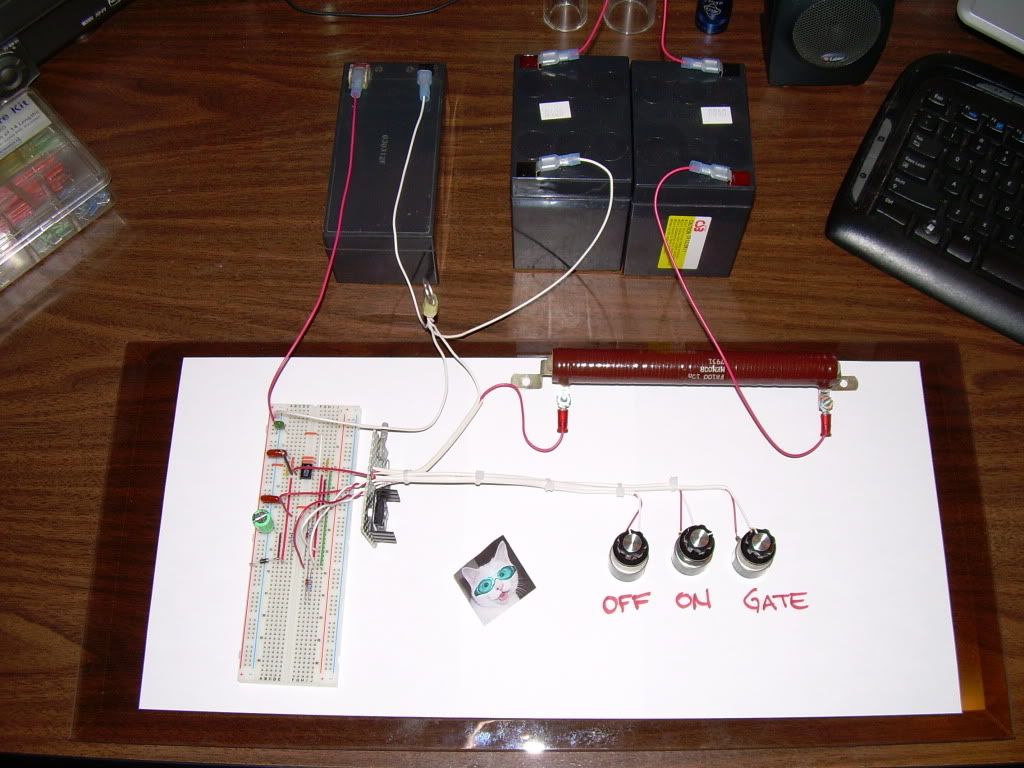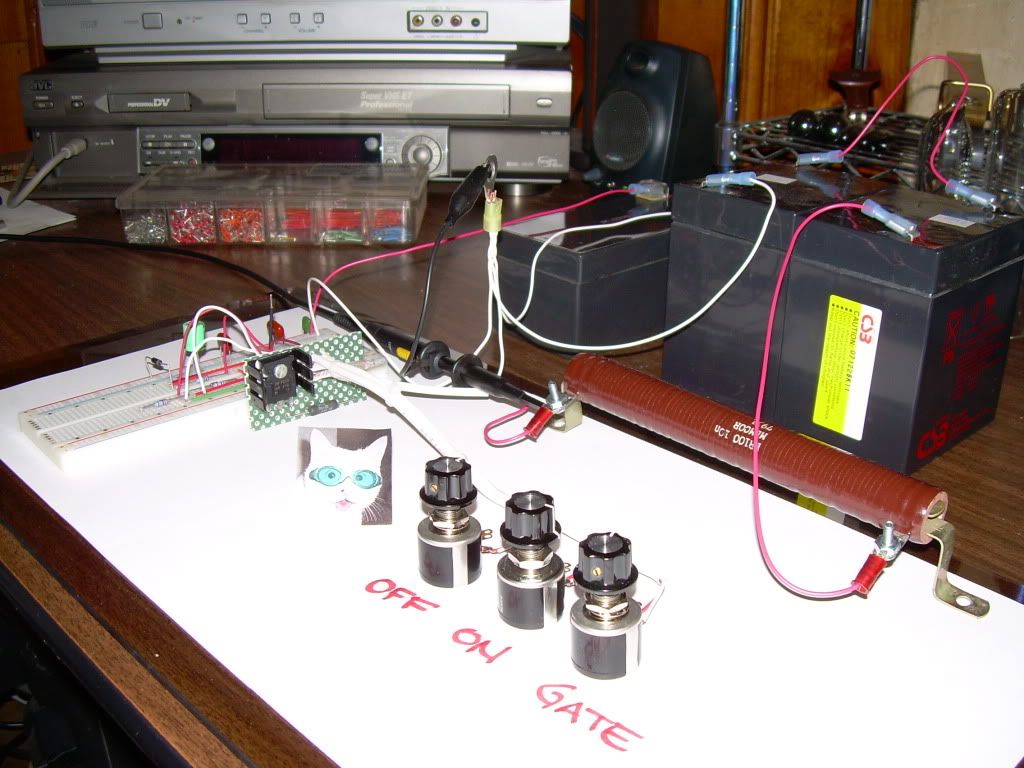Hi Glen,
Now I see why the cat wears eye shields Now that is some 'intense' tracing.
Now that is some 'intense' tracing.
Nice ringing, but this is not the aperiodic oscillation that Aaron has demonstrated.
Looking at the timing there, you can reduce your on-time to about 2 or 3 microseconds and even shorten your off time to as little as 8 microseconds and that would give a pretty optimal timing for conventional power dissipation in the load. That would push the duty cycle up to 25% or 30+% but it would still resonate the same.
I can't advise yet on the aperiodic oscillation as I haven't powered mine up yet interruptions...but I can work on it now for a bit. From Aaron's posts it seems to be a matter of getting the gate resistance to a level that allows it to occur. In your case, I would increase the off time to about 400 microseconds before experimenting with the aperiodic stuff. You need to let things recuperate a bit in between hitting the resistor with more straight juice.
interruptions...but I can work on it now for a bit. From Aaron's posts it seems to be a matter of getting the gate resistance to a level that allows it to occur. In your case, I would increase the off time to about 400 microseconds before experimenting with the aperiodic stuff. You need to let things recuperate a bit in between hitting the resistor with more straight juice.
Great to see it working
Now I see why the cat wears eye shields
 Now that is some 'intense' tracing.
Now that is some 'intense' tracing.Nice ringing, but this is not the aperiodic oscillation that Aaron has demonstrated.
Looking at the timing there, you can reduce your on-time to about 2 or 3 microseconds and even shorten your off time to as little as 8 microseconds and that would give a pretty optimal timing for conventional power dissipation in the load. That would push the duty cycle up to 25% or 30+% but it would still resonate the same.
I can't advise yet on the aperiodic oscillation as I haven't powered mine up yet
 interruptions...but I can work on it now for a bit. From Aaron's posts it seems to be a matter of getting the gate resistance to a level that allows it to occur. In your case, I would increase the off time to about 400 microseconds before experimenting with the aperiodic stuff. You need to let things recuperate a bit in between hitting the resistor with more straight juice.
interruptions...but I can work on it now for a bit. From Aaron's posts it seems to be a matter of getting the gate resistance to a level that allows it to occur. In your case, I would increase the off time to about 400 microseconds before experimenting with the aperiodic stuff. You need to let things recuperate a bit in between hitting the resistor with more straight juice.Great to see it working












Comment